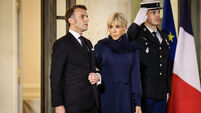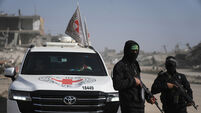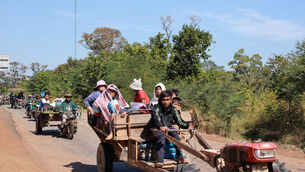Russia marks anniversary of Beslan school carnage
Relatives of victims of the Beslan school hostage seizure attended a solemn memorial ceremony today on the third anniversary of the carnage, while experts continued to argue over what triggered the violence.
Weeping townspeople laid red flowers on the floor of the school’s gymnasium where more than 1,000 hostages were held during the ordeal, and schoolchildren released white balloons in memory of the 334 people who died in the siege, more than half of them children.














